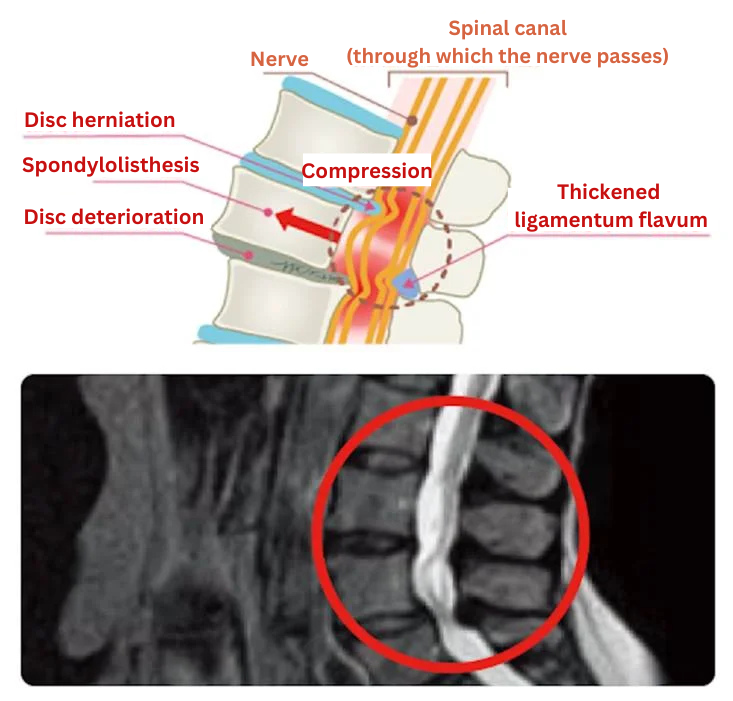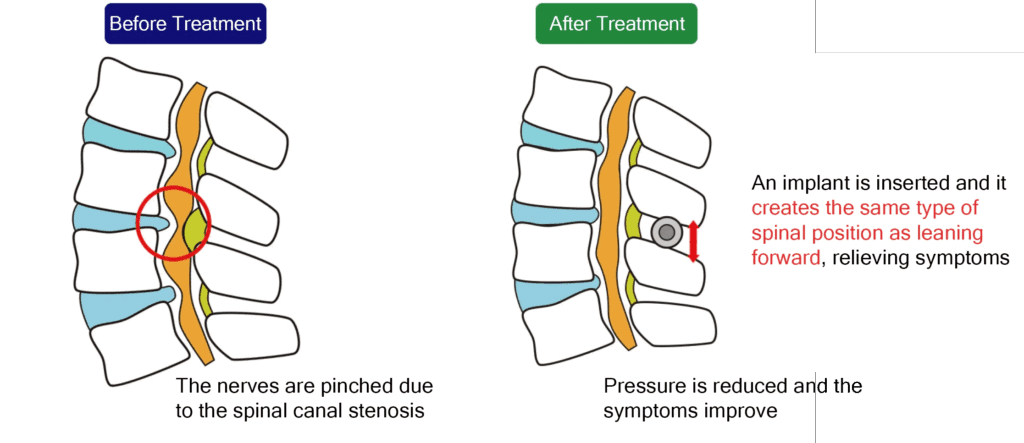Column Can You Travel When You Have Spinal Stenosis? Tips on How to Prepare When Traveling and Sleeping Away From Home
August 1, 2025
Spinal canal stenosis is a condition in which the nerve passageway (i.e. the spinal canal) in the spine narrows down.
When the spinal canal narrows, the nerves are compressed, causing pain and numbness from the lower back to the lower limbs.
Many patients become apprehensive about traveling once they have spinal canal stenosis.
In this article, we will explain the various precautions to take when traveling and sleeping away from home for patients with spinal stenosis.
What is spinal stenosis?
Spinal stenosis is a condition in which the spinal canal, which is the passageway for nerves, becomes stenosed ( i.e., narrow), causing compression of the nerves. When instability of the lumbar spine is the cause, pain often occurs during physical movement.
With lumbar spinal stenosis, numbness or pain may occur below the waist. Intermittent claudication, which is a characteristic symptom, involves pain or numbness in the buttocks or legs while walking, which improves with temporary rest but returns after walking a given distance.

This section will cover strategies for different modes of transportation, posture and items to bring during overnight stays, and key points to discuss with your doctor.
Can you travel when you have spinal stenosis?
Even if you have been diagnosed with spinal stenosis, travel is still possible. However, it is important to be aware of how to manage your symptoms during travel.
Precautions to take when moving around
Whether you travel by car, train, or plane, you will be sitting for long periods of time. However, sitting for long periods of time can put strain on your lower back and aggravate symptoms such as pain.
Take frequent breaks during your trip to stand up, do some light stretching, and walk around.
Choosing transportation options that allow for quick travel, such as bullet trains or airplanes, can also be effective. In such cases, selecting a seat near the aisle will make it easier to stand up and walk around.
When traveling by private car, keep driving times short and take frequent breaks.
Precautions to take at accommodation facilities
When selecting an accommodation solution around your travel destination, opt for barrier-free facilities (with few steps and elevators available).
Select a room that is as spacious as possible in order to facilitate movements.
We recommend staying in a Western-style room, since it is more difficult to stand up and sit down in a Japanese-style room,.
When bathing, be careful not to slip. Whenever possible, choose a room with a bathroom equipped with handrails.
If it is difficult to get in and out of the bathtub, choose a room equipped with only a shower.
Consult with the accommodation facility in advance and confirm that the necessary assistances (such as the rental of canes or walkers) are available.
Other points to take in consideration
・Reduce your luggage
Avoid carrying heavy luggage. Reduce the amount of luggage you carry yourself by sending it by courier service. Using a carry-on case is also a convenient option.
・Plan a reasonable schedule
When sightseeing, plan a schedule with plenty of time to spare.
Keep walking distances short and take frequent breaks.
・Manage your physical condition
Get plenty of sleep and eat a balanced diet.
・Stretching
Even while traveling, frequently performing light stretching exercises can help prevent symptoms from aggravating.
Do not forget to ask your doctor advice
It is recommended to consult with your primary care physician before traveling. It is also advisable to check with your doctor about any precautions concerning posture or necessary medications to take during travel.
If you experience pain while traveling, take a break and avoid overworking yourself.
It is also recommended to research medical facilities along your travel destination in advance in case of emergencies.
Our treatment: the Florence Method and Q-Florence Method
Our clinic performs the Florence Method and Q-Florence Method to treat spinal stenosis.
Under local anesthesia and sedation, a device is inserted percutaneously to widen the narrowed spinal canal.
By inserting the device, we maintain spinal rotation and flexion while stabilizing the vertebrae, widening the spinal canal, suppressing disc protrusion, and reducing ligamentum flavum thickening. As the narrowed spinal canal widens, pain is alleviated.
Since the Florence Method and Q-Florence Method are minimally invasive treatments with low risk, there have been no reports of complications or symptom recurrence post-treatment.

The Q-Florence Method (article in Japanese)
If you are suffering from spinal stenosis, please consider a consultation at our clinic.
Related Articles
Lumbar Spinal Canal Stenosis: What is Actually Happening to my Body?
Why Do the Symptoms of Spinal Stenosis Differ From Person to Person?
Diagnosis and Treatment of Spinal Stenosis: Why Early Detection is Critical
Treatment of Spinal Canal Stenosis: The Various Conservative Treatments and Surgical Options
What Is the right timing to have spinal stenosis surgery? The Guidelines as Recommended by Doctors



